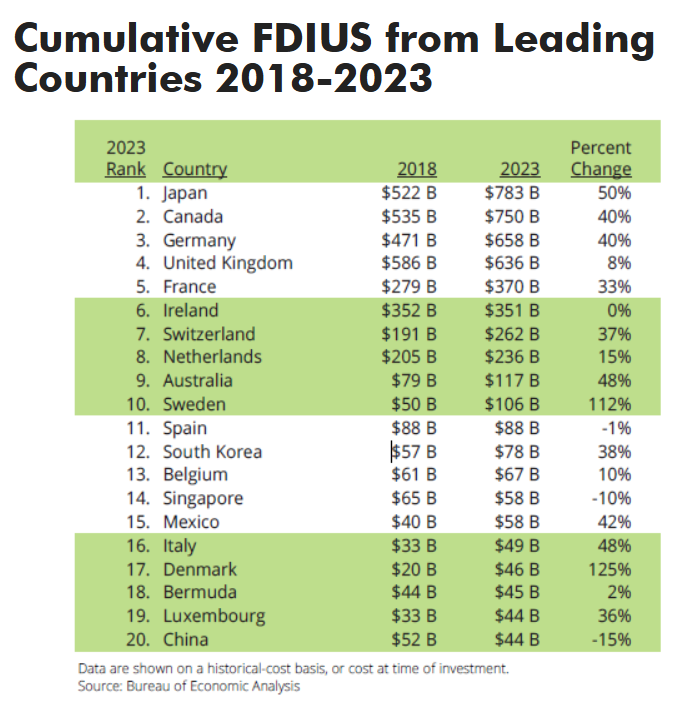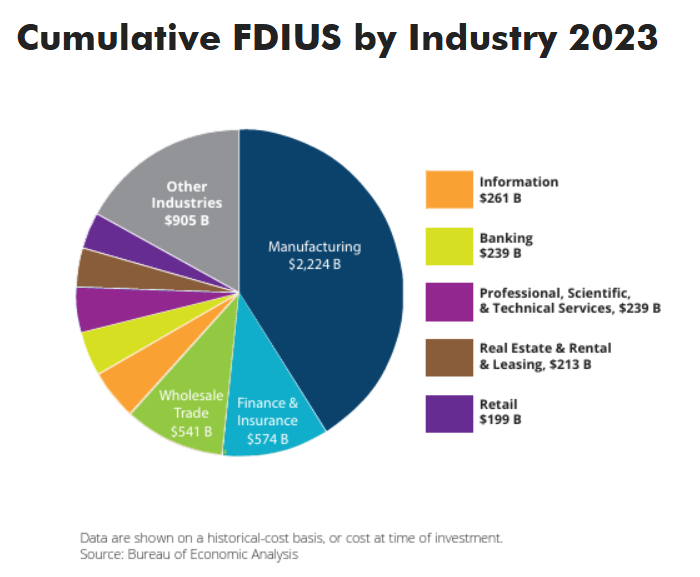American Dynamism, $1.4 Trillion, American Mineral Production
JD Vance at the American Dynamism Summit
In case you missed it, VP Vance gave a speech last week that gave, in my opinion, one of the more clearly articulated views of what exactly this administration is trying to pull off (whether they should do it or if they can do it is a conversation for another time) and why they think it’s necessary to do so.
The conference was hosted by Andreessen Horowitz, the VC fund behind the new Techno-Optimist movement in the U.S.
Here’s a few of the key quotes / takeaways:
“Our workers, the populists on the one hand, the tech optimists on the other, have been failed by this government, not just the government of the last administration, but the government in some ways of the last 40 years because there were two conceits that our leadership class had when it came to globalization.
The first is assuming that we can separate the making of things from the design of things. The idea of globalization was that rich countries would move further up the value chain while the poor countries made the simpler things. You would open an iPhone box and it would say designed in Cupertino, California. Now the implication, of course, is that it would be manufactured in Shenzhen or somewhere else. And yeah, some people might lose their jobs in manufacturing, but they could learn to design or to use a very popular phrase, learn to code.
But I think we got it wrong. It turns out that the geographies that do the manufacturing get awfully good at the designing of things. There are network effects, as you all well understand. The firms that design products work with firms that manufacture. They share intellectual property. They share best practices, and they even sometimes share critical employees.
Now, we assume that other nations would always trail us in the value chain, but it turns out that as they got better at the low end of the value chain, they also started catching up on the higher end. We were squeezed from both ends. Now that was the first conceit of globalization.”
Nowhere has the above point materialized more obviously than in the race for EV supremacy, in particular between Tesla and BYD. (DeepSeek AI is a close runner-up, however)
In a recent report, BYD claims their latest charging platform can fully charge a battery in just five minutes (at a peak charging speed of 1,000 kw), giving their cars a range of 249 miles. Compare these numbers with Tesla’s best supercharger - 15 minutes for a full charge at 500 kw peak charging speed, giving their vehicles a 167 mile runway.
“I think the second is that cheap labor is fundamentally a crutch, it is a crutch that inhibits innovation. I might even say that it's a drug that too many American firms got addicted to. Now if you can make a product more cheaply, it's far too easy to do that rather than to innovate. And whether we were offshoring factories to cheap labor economies or importing cheap labor through our immigration system, cheap labor became the drug of Western economies. And I'd say that if you look in nearly every country from Canada to the UK that imported large amounts of cheap labor, you've seen productivity stagnate, and I don't think that's not a total happenstance. I think that the connection is very direct.
And so I'd ask my friends, both on the tech optimist side and on the populist side, not to see the failure of the logic of globalization as a failure of innovation. Indeed, I'd say that globalization's hunger for cheap labor is a problem precisely because it's been bad for innovation. Both our working people, our populists and our innovators gathered here today have the same enemy, and the solution I believe is American innovation.
Because in the long run, it's technology that increases the value of labor. Innovations like the American system and the interchangeable parts revolution it sparked, or Ford's moving assembly line that skyrocketed the productivity of our workers, that's how American industry became the envy of the world. And that's what I really want to talk about today, why innovation is key to winning the worldwide manufacturing competition, to giving our workers a fair deal and to reclaiming our heritage via America's great industrial comeback, and I believe that's what we're on the cusp of, a great American industrial comeback.”
I suggest watching the speech in full to get a more holistic view of how this administration is approaching the reindustrialization theme.
$1.4 Trillion Over 10-Years
In 2024, the U.S. received $353 billion in Foreign Direct Investment (FDI), a 22% increase over 2023, and marking the 12th straight year it has led the world in FDI inflows. The U.S. also leads in cumulative inflows (the total value of all foreign direct investments held by foreign investors in a country at a specific point in time), sitting at about $5.4 trillion.
The U.S. currently represents 26% of global FDI inflows, the EU is 25%, Emerging Economies are 32%, and the rest of the world is 17%. Emerging Economies (Vietnam, Indonesia, etc.) have been some of the biggest benefactors of the rise of globalization.
But as we are just now setting off on this journey of the Great Reshuffle (shifting trade and strategic alliances), one element of change that we can almost certainly count on is how and where the world decides to allocate FDI going forward.
Will Canada continue to invest as heavily as they have in the U.S.? Likely not. Will European countries? TBD. The Middle East?…
One thing that’s becoming very clear, however, is that the pace of announcements of investment into the U.S. since the beginning of the year does not seem to be slowing down at all… they just keep accelerating.
On top of this ever-growing list of commitments, comes the largest of them all, a $1.4 trillion 10-year commitment from the United Arab Emirates (UAE), focusing investment on critical infrastructure projects (AI, energy, semiconductors, and manufacturing).
If you want to go down a somewhat esoteric but interesting none-the-less geopolitical rabbit hole, give this post a read: America’s Hostile Takeover: How the Tech Broligarchy Created the First Post-State Superpower—and Why It No Longer Needs Its Allies.
“America is not in decline. It is under new ownership.
The systems still function—but not for the same reasons, or the same people. What appears incoherent from the outside is, on closer inspection, a consolidation of power under a new regime. America hasn’t collapsed. It has restructured. The result is not weakness—it is strategic freedom.
The United States is no longer governed by the state. It is governed by a ruling network: asset allocators, platform owners, legal tacticians, and media architects. Donald Trump is its apex, but not its originator. What binds them is not ideology but configuration—shared leverage, shared threats, and shared incentives to discard the formalities of institutional rule.”
American Mineral Production
Given the slate of headlines coming out on a daily basis, you’d be forgiven if this White House release from last week slipped by.
It appears the Trump Adminstration is going to do what it can to bring critical minerals production, as well as uranium, copper, potash, and gold, back to the U.S.
Take this statement with the obvious huge grain of salt as mineral production (mining, processing, refining, and smelting) is a very long-tail, capital intensive industry, so who knows if this ever actually takes off. But for now, we’ll take it at face value.
Purpose Statement: “Transportation, infrastructure, defense capabilities, and the next generation of technology rely upon a secure, predictable, and affordable supply of minerals. The United States was once the world’s largest producer of lucrative minerals, but overbearing Federal regulation has eroded our Nation’s mineral production. Our national and economic security are now acutely threatened by our reliance upon hostile foreign powers’ mineral production. It is imperative for our national security that the United States take immediate action to facilitate domestic mineral production to the maximum possible extent.”
“…within 30 days of the date of this order, the Secretary of Defense shall add mineral production as a priority industrial capability development area for the Industrial Base Analysis and Sustainment Program… Within 30 days of the date of this order, the Assistant Secretary of Defense for Industrial Base Policy shall convene buyers of minerals and work towards an announced request for bids to supply the minerals.”
Two More Big Announcements
Johnson & Johnson Increases U.S. Investment to More than $55 Billion Over the Next Four Years
Includes four planned new manufacturing facilities, with ground-breaking today in North Carolina on $2 billion+ facility. Total Company U.S. economic impact estimated to be more than $100 billion per year
South Korea's Hyundai to announce $20 billion US investment, new steel plant
Investment includes $5 billion steel plant in Louisiana

